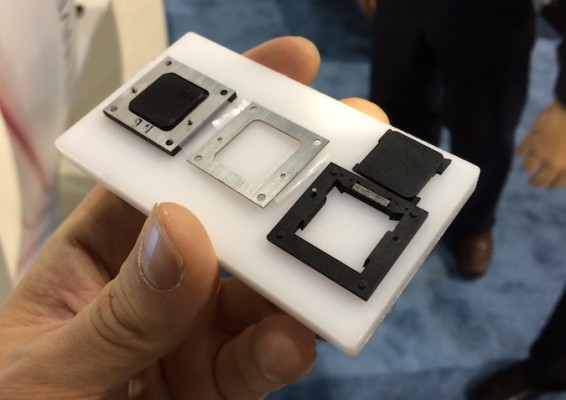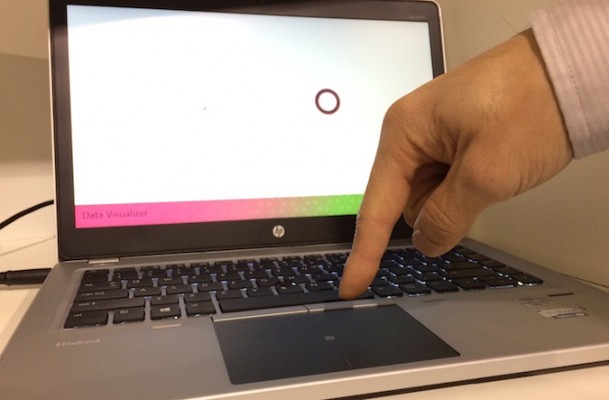Hands-on: Synaptics Shows Off Slim Magnetic Keyboard with Touch
Synaptics may be best known for its touchpads, but at CES 2014 it showed off a keyboard concept that could be as influential for future notebooks. Instead of a mechanical switch to raise and lower the keys, Synaptics' keyboard uses magnets, which leaves a lot more room underneath the keys. As a result, this lets the company to add touch sensors beneath the keys, so you can activate Windows 8 gestures by swiping your fingers over the top of the keyboard.
MORE: Top 10 Tech Trends of 2014
A close-up view of Synaptics' magnetic keys. The key caps attach using magnets, and slide up an down on rails on either side.
Synaptics also demonstrated a scrolling function in the space bar, which lets you page through documents or Web sites while keeping your fingers on the home row. Additionally, the keys depress on an angle, rather than straight down, which gives the illusion of greater key travel. For example, 1mm of travel on the Synaptics keyboard will feel like 1.3mm, according to a company representative. Even cooler, the keys can automatically retract when you close a notebook's lid, which will potentially allow for even thinner designs.
Synaptics isn't resting when it comes to touchpads, either. Building on its experience with hover gestures in devices such as the Samsung Galaxy S4, the company is also exploring hover technology for touchpads. Since there's no interference from a touchscreen, the touchpad can more accurately detect your finger from a much greater distance--as much as 3 or 4 inches. Users can wake their notebook simply by swiping their hand across the touchpad, or use Windows 8 gestures, among other things. Depending on how useful Synaptics' technology proves, it could spell trouble for companies such as Leap Motion, who is also integrating motion sensors into laptops.
Sign up to receive The Snapshot, a free special dispatch from Laptop Mag, in your inbox.
Michael was the Reviews Editor at Laptop Mag. During his tenure at Laptop Mag, Michael reviewed some of the best laptops at the time, including notebooks from brands like Acer, Apple, Dell, Lenovo, and Asus. He wrote in-depth, hands-on guides about laptops that defined the world of tech, but he also stepped outside of the laptop world to talk about phones and wearables. He is now the U.S. Editor-in-Chief at our sister site Tom's Guide, where he oversees all evergreen content and the Homes, Smart Home, and Fitness/Wearables categories for the site..


